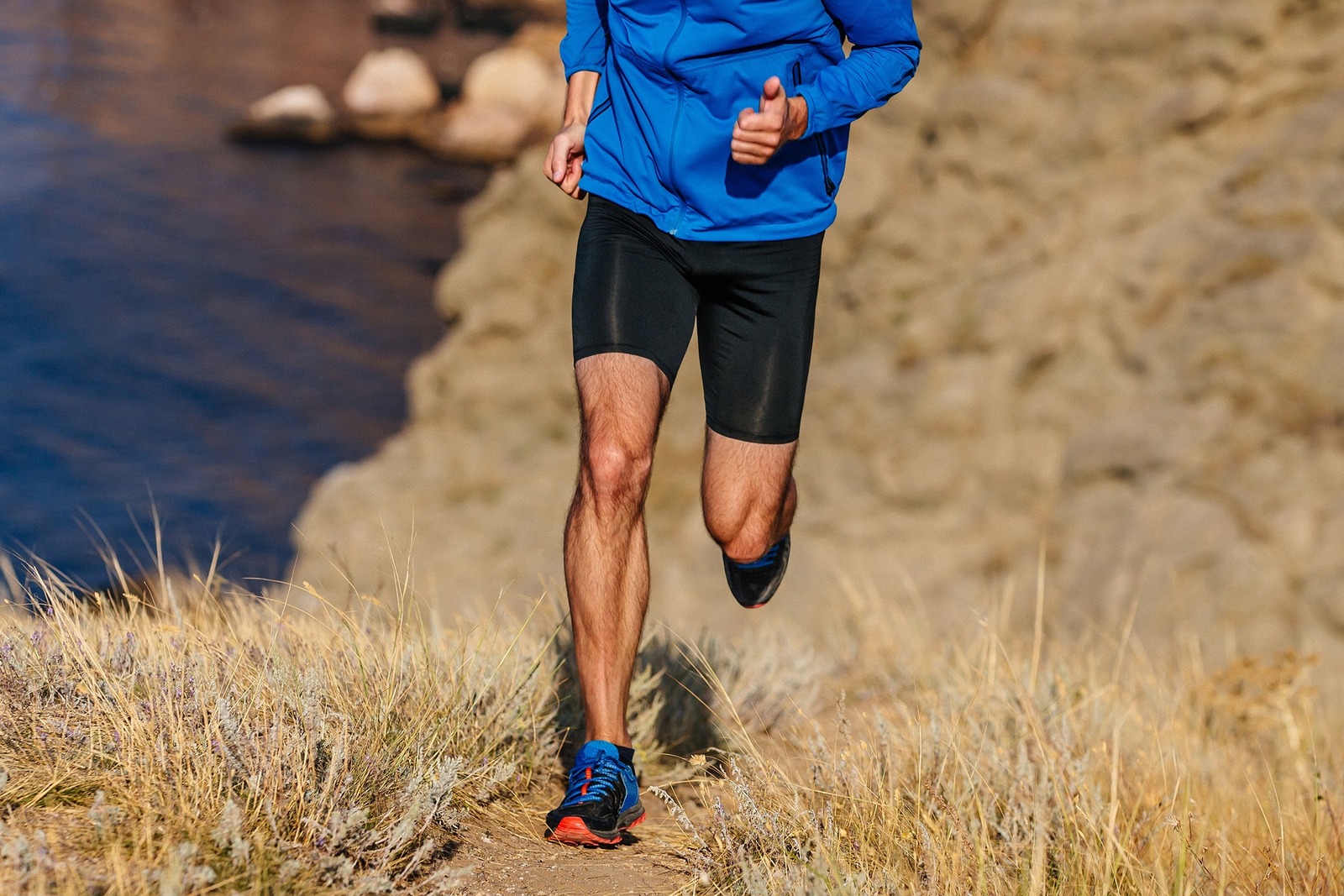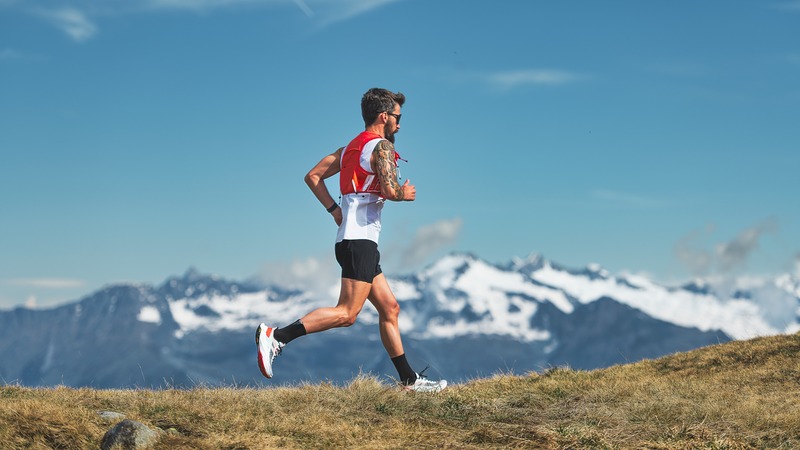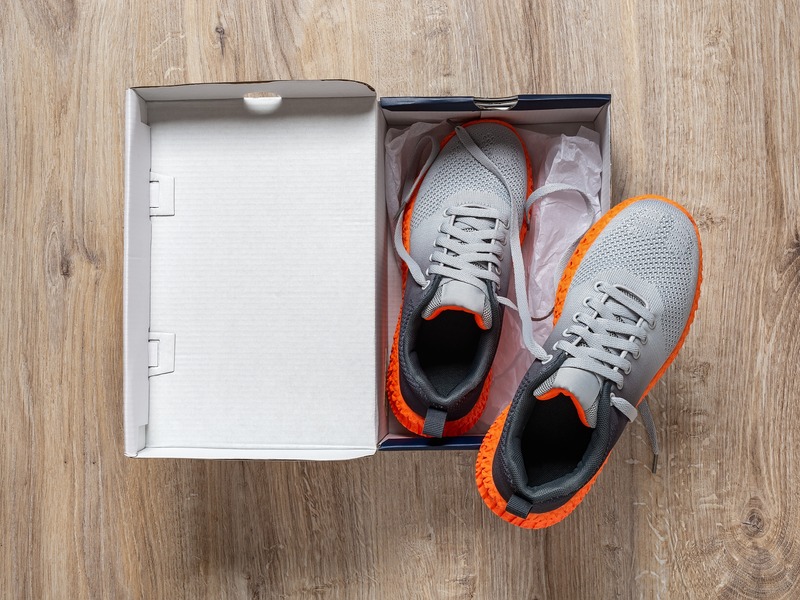Heel-to-Toe Drop Demystified: How It Affects Your Running Form and Which Drop is Right for You
June 20, 2024

When you buy through links on our site, we may earn an affiliate commission.
Whether you're an elite marathoner or just starting out, the height difference between the heel and forefoot of your running shoe – known as the heel-to-toe drop – should play a key role in choosing the right pair of running shoes.
This crucial dimension, typically ranging from 0 mm to 12 mm (or more), impacts everything from your foot strike to joint forces, muscle activation, and more. Understanding the fundamentals around high, medium, and low heel drops can inform smarter shoe choices that enhance efficiency and reduce injury risk.
As we dive deeper, you'll discover proper drop selection isn't one-size-fits-all. Instead, choosing your ideal height depends on carefully analyzing your gait, foot-striking tendencies, and running background.
By demystifying the key considerations around heel drop, you'll be equipped to select shoes aligned to your individual needs – critical knowledge for taking your performance and comfort to the next level.
Understanding Heel-to-Toe Drop
Before getting into the biomechanical significance of heel-to-toe drops in running shoes, let's first explain exactly what they are.
Simply put, the heel-to-toe drop refers to the height difference between your running shoe's heel and forefoot areas, measured in millimeters. For instance, let's say you had a running shoe with a 35mm heel stack height (the distance between the floor and the underside of your heel) and a 23mm forefoot stack height (the distance between the floor and the underside of your forefoot). In that case, the “drop” would be 12mm, which is pretty typical.
Over the last fifty years, running shoes have gradually increased their heel-to-toe drops, often measuring 12mm or more. The arrival of Nike Air and Asics Gel designs bumped drop heights up even further. This provided ample cushioning and promoted the common heel-strike running style.
However, the 2009 release of Christopher McDougall's acclaimed book “Born to Run” changed the industry. The author followed the Tarahumara tribe in Mexico, members of which run hundreds of miles every week in nothing more than flat rubber sandals. The book became a best-seller and sparked mainstream interest in minimalist running. This movement emphasized low or zero-drop shoes, which enable a more natural midfoot or forefoot strike.
In response, major brands began offering shoes across the drop spectrum: from lofty, well-cushioned models exceeding 12mm to more “natural” options at 4mm-8mm and fully minimal designs with 0mm drop. Consequently, you now have greater choice over the heel-to-toe offset best suited to your biomechanics and running style.
How Heel-to-Toe Drop Influences Running Biomechanics
Now that you understand what heel-to-toe drop is, it's essential to look at why it's such an important consideration when trying to find the right running shoes for you. Mainly, it has to do with how it influences your biomechanics.
Heel Drop Impacts Foot Strike Patterns
The height difference between your heel and forefoot directly influences which part of your foot makes initial contact with the ground. Higher heel drops encourage a rearfoot strike, with the outside of your heel hitting first.
In contrast, low or zero-drop shoes promote a midfoot or forefoot strike. At smaller offsets, your foot lands in a flatter, more level position, enabling the middle or front of your foot to contact first.
Landing towards the front of your foot usually signals enhanced running economy and efficiency. If you're a natural midfoot striker, you better utilize the natural springs of your feet and ankles to propel yourself. You also waste less energy trying to decelerate downward motion upon impact compared to hard heel striking.
However, not everyone is built the same, and some people are naturally more heel-oriented in their foot strike, which requires greater cushioning in that zone.
Varying Impact Forces and Muscle Activation
Alongside foot strike changes, research shows that lowering heel drop reduces collision forces traveling through joints. The trade-off is that it engages foot and lower leg muscles more actively due to the flatter landing. With proper strengthening exercises in this area, you can wear lower-drop shoes and experience enhanced speed and endurance while lowering the likelihood of injury.
Interestingly, studies around cadence and stride length changes across heel drops remain largely inconclusive. Both factors likely depend more on your natural foot strike and running speed than shoe choice alone. Still, selecting appropriate offsets according to your style and strengths is the best bet to maximize performance and reduce the chance of injury.
Pros and Cons of Different Heel Drops
When selecting running shoes, the best course of action is always to consider the advantages and disadvantages of various heel-to-toe drops in relation to your specific needs. To help you gauge which might be best for you, we will quickly review the pros and cons of each heel-to-toe drop.
High-Drop Shoes (12+mm)
If you're looking for ample cushioning above all else, running shoes with heel drops exceeding 12mm aim to deliver just that. Runners of all experiences often gravitate toward these models as they offer major brands' headline cushion technologies and are great for accumulating daily mileage.
Consistent and dedicated heel-strikers also stand to benefit from the lifted heel platform. Just remember that excessive elevation might increase impact forces and overstriding tendencies for some of you. Plus, your calves won't strengthen much, given the emphasis stays higher up the chain.
Moderate-Drop Shoes (6-10mm)
For those of you seeking a versatile blend of responsiveness and support, moderate drop shoes ranging from 6mm to 10mm might provide a "Goldilocks" option. If you're trying to transition away from high offsets, you may appreciate the gradual reduction in heel elevation paired with a useful ground contact feel.
That said, if you're an entrenched heel striker, moderate drop models could be less than ideal, as they won't offer the same level of comfort as those with much larger heel stack heights.
Low-Drop and Zero-Drop Shoes (0-4mm)
If maximizing biomechanical efficiency ranks high in your goals, low to zero-drop shoes warrant consideration. Minimally elevating the heel over the forefoot strengthens your foot and lower leg muscles over time. Ankles, Achilles, and connected tissue should gradually adapt to softened landings as your strike shifts forward.
But take care not to dive headfirst into zero-offset running shoes. Unless you have particularly strong lower legs, moving straight into minimalist shoes will likely result in injury. Try alternating with moderate-drop shoes or strictly limiting the distance you run in these types of shoes. It might be a good idea to reserve your use of these shoes (at least initially) for speed workouts, where you're naturally more up on the forefoot with your foot strikes.
Again, for some, especially the heavy heel strikers, these shoes may never suit your running style and should be avoided.
Choosing the Right Heel-to-Toe Drop for You
When selecting the right running shoes, there's no universally ideal heel drop that applies to all runners. Choosing the right offset height for you requires careful consideration of several personal factors.
First, reflect on your running background. Are you brand new to the sport? Or a veteran marathoner? Your experience level will go some way to addressing the appropriate drop levels. If you're an experienced runner training for your next marathon, you probably have the strength in your lower legs to deal with lower drop heights. If you're more casual with your running goals and weekly mileage, it's probably best to prioritize comfort in moderate or high-offset running shoes.
Don't forget your ongoing injury history, either. Past plantar fasciitis or shin splints may warrant shifting up in heel lift, while knee or hip pain could indicate lowering the drop to offload the impact pressure going through your joints.
Finally, factor in your personal preference. The number one factor should always be how you feel in your shoes. If you're uncomfortable when running, then chances are something isn't right. So, keep experimenting across the heel drop range until you find the ideal level.
Find Your Best Heel-to-Toe Drop to Prevent Injury and Improve Performance
Whether you're an elite racer or recreational jogger, selecting the proper heel-to-toe drop can prove critical for injury prevention and unlocking your running potential. Now that you understand how various offset heights interface with foot strike patterns, joint forces, and muscle engagement, you can make a more informed decision when buying your next pair of running shoes.
While the general rule is that more experienced runners slowly gravitate to lower drop heights, the truth is that there are no hard and fast rules. It's more about you finding the right balance for your mileage, experience level, and personal preferences regarding ground feel.
So keep experimenting, and when the time comes to move up or down in drop height, make sure to use RunningShoeDeals.com to find the biggest discounts and best deals on your next pair of running shoes.


